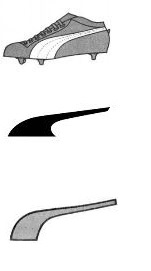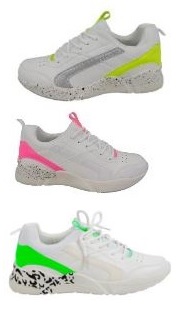Trademark agency Abcor - protect your trademark
Contact
If you have questions or want to know more about our services?Please mail: info@abcor-ip.com
Please call: 31 (0)71 576 3116
In recent years we saw a continuation of mergers and acquisitions in the pharmaceutical industry. Pharmaceutical companies merge in order to fill gaps in the R & D pipeline and to secure future sales. The costs for developing a new drug are about 1 billion Euros. Moreover, many possible substances that could serve as a new drug are terminated in the development phase (only 1 of 5000 substances reaches the patient). The return on investments time is relatively short. The patent period lasts 20 years. A patent for a possible new drug has to be applied in the early development phase. A period of 8 to 15 years passed before the drug is fully developed and ready for the market. It seems unfair that a medicine can only profit from patent protection for only a short period. Therefore a patent extension of 5 years can be requested for a pharmaceutical product.
Several patents of well established drugs are expired or will be expiring in the near future and there is a lack of new product introductions from the R&D pipelines. As a result thereof the incomes of the pharmaceutical industries reduce and as a consequence the industry is reorganizing mainly their R & D. Recently, 2000 employees within Novartis were fired since their trademark product DIOVAN with the active ingredient Valsaran faced competition of generic versions of their product. Also pharmaceutical companies may cease the production of older products (expired patents) with low profitability because of the generic competition. Or simply the investment in a production unit is too expensive.
The loss of knowledge and manpower creates further pressure on the pharmaceutical R & D and production. The many acquisitions also contribute to large scale reorganizations. In this way the pharmaceutical industry is trying to achieve economic benefits by centralizing departments, mainly in the R & D area and in some extend the production area. As a consequence the industry has become vulnerable when a site is unable to produce. Another production site cannot take over.
It has become increasingly difficult to launch new medicines on the market since the governmental regulations of the FDA, EMA and national health authorities have become stricter. Therefore, also less new drugs will be launched on the market. The pharmaceutical industry is dependent on their existing drugs (with patent protection) in order to incur the costs made with the development of their new medicines in the R&D pipeline. Additionally the prices of medicines are under pressure. In the Netherlands there is focus on the free market for health and medicines. In this system Dutch health insurance companies play an important role pushing the price of medicines down even further.
Cheap medicines have an effect on parallel import. In the European Union people and goods move freely. Parallel importers buy relatively cheap drugs in one European country, repack, and sell the medicine for a higher price in another European country. As long as these traders comply with the repackage requirements the proprietor of the product is unable to successfully counter act. It is of importance that
The repackaged product will not affect the condition of the product or the reputation of the mark or the holder of the mark will be damaged. Also the name of the parallel trader including the name of the proprietor must be clearly stated on the packaging. And the proprietor has to be notified about the intention to market the repackaged product.
The parallel importer has to meet the same requirements like a pharmaceutical company of Good Manufacturing Practices (GMP) when performing the repackaging operation. Therefore, the importer and the repackaging facility have to be in possession of a manufacturing license that has been issued after a successful inspection by the local inspectorate.
For years, the pharmaceutical industry has been trying to reduce the parallel trade of medicines. They have for example supplied their distributors with a limited volume of medicines in those lower priced countries. The intention was that the distributor could only provide the drugs to the local population and not to parallel traders. The parallel traders revolted against this way of trade. The judge ruled that a limited supply is only permissible if it is reasonable, in proportion, and seeks to protect the business interest. The judge takes into account the relationship with the distributor and the size of orders in relation to the needs of the market.
Another way to cope with parallel trade is to use price differentiation. In this situation the current price will be maintained for the local population but for potential parallel trade a higher rate is requested. Again the parallel traders filed a complaint. In 2009, the European Court of Justice determined that the pharmaceutical sector falls under the exception of par. 81 (3) EC. It states that the competitive trading act does not apply when the price agreements contribute to improve production or distribution of goods or to promote technical or economic progress. This is because of the fact that innovation is in the interest of the consumer. The consumer benefits of improved medicines. The profit made by the innovative pharmaceutical industry will contribute in maintaining the R&D. It is not obligatory that the entire profit will flow into R&D but a substantial part of it. The consumer will not benefit of parallel trade since the profit made with this trade will only fall to the parallel trader. The pharmaceutical industry believes that reformation is needed in order to increase transparency in prices within the EU. The way to achieve this, all EU countries have to align their health care policies with respect to medicines. However, this is not the case yet.
It is also prohibited to put a drug under different trademark names on the market in the European Union. The EU authorities have to be convinced that this marketing strategy is not created in order to protect the companies’ own market. The proprietor must demonstrate that they are forced to use different trademark names, because the regulatory authority in one country denied the trademark name or the mark was withdrawn from the trademark register. These restrictions make it difficult for the pharmaceutical industry to prevent other companies from using their product or to determine their own price.
Another increasing problem are counterfeit medicines. In general counterfeit medicines do not contain the active ingredient or can contain another active ingredient than mentioned on the packaging. This can lead to dangerous situations. The industry initiated a discussion with the European Commission in order to take adequate actions against counterfeit medicines. Awareness among the public has to be created. Also doctors, pharmacists, customs officials and police have to be well-informed on the subject. Next to this, a central distribution tracking system was tested successfully in Sweden. Such a database follows the drug until the end supplier but this tracking system is expensive. Therefore, the industry is proposing a system to track a product from production facility throughout the distribution system. However, the European Commission would like to have a system that starts tracking from the plant where the active ingredient is produced. The European Commission proposed system will be very expensive and this will have an effect on the prices. The exact impact of both systems is not clear yet with respect to the position of the re-packers (parallel traders).
The reason that we are only minimally informed about the shortage of medicines lies in the fact that there are major interests between the governments, health care insurance companies and the pharmaceutical industry. On one hand, the Dutch government and the insurance companies want to regulate the health care business as cheap as possible. Prices are fixed and by encouraging the free market, generic products and parallel trade, prices are further reduced. On the other hand, the pharmaceutical industry wants to sell its product to a country at the best possible price, also in order to maintain their present and future (R&D) activities. The limitation or discontinuation of drug supply will eventually lead to damage in patients in the Netherlands or in other European countries. Time for a reconsideration?
pharma

